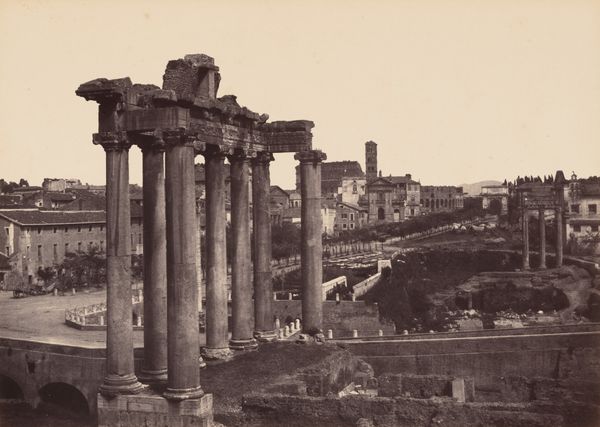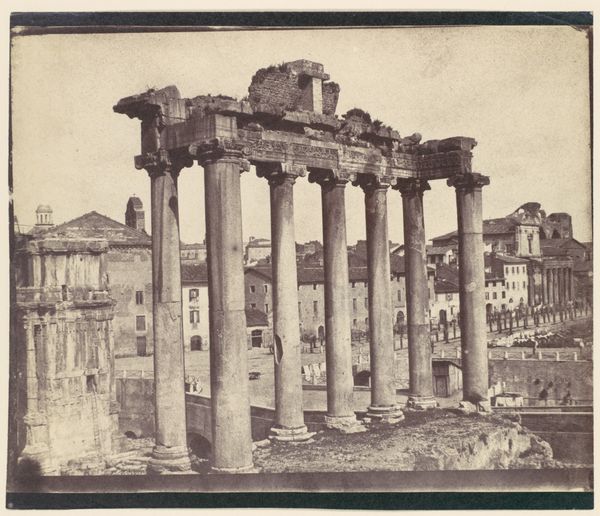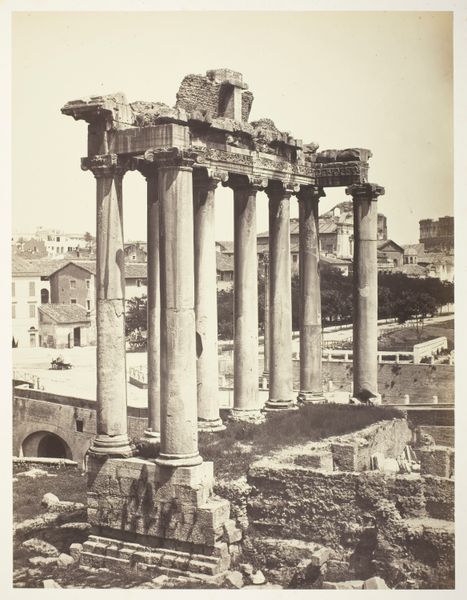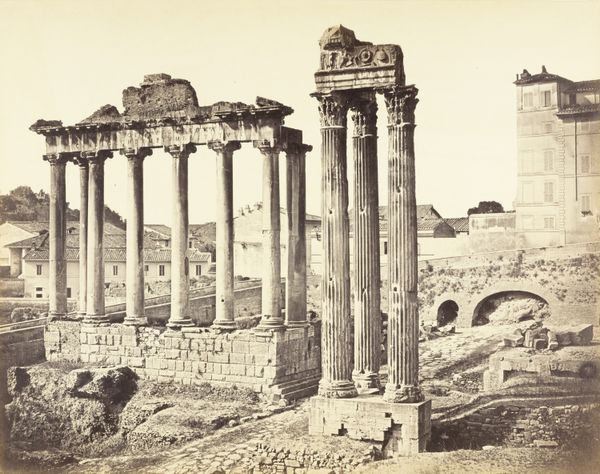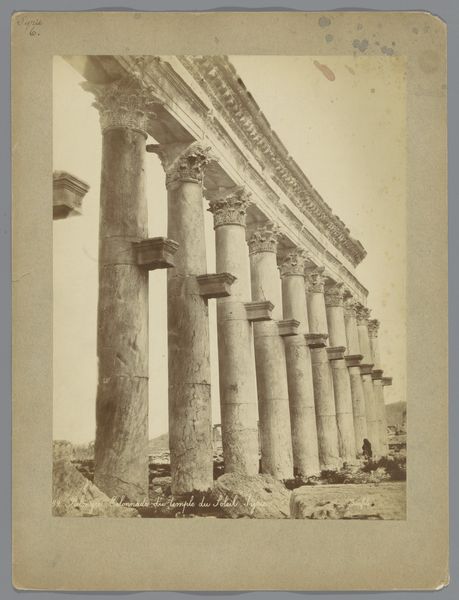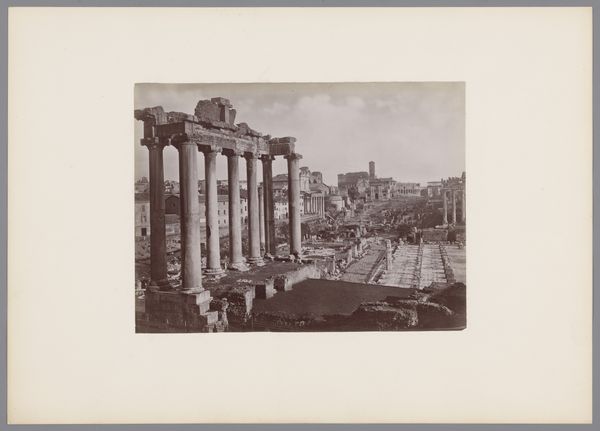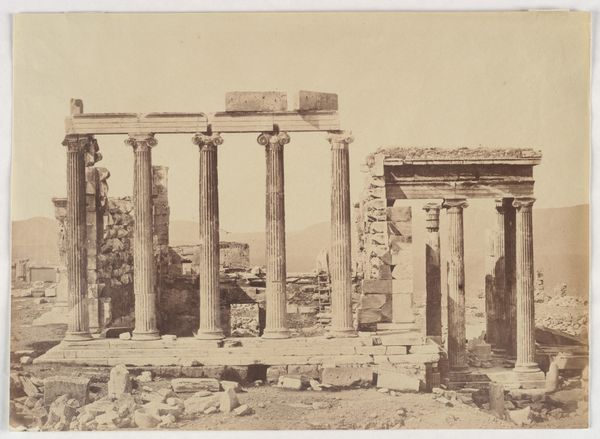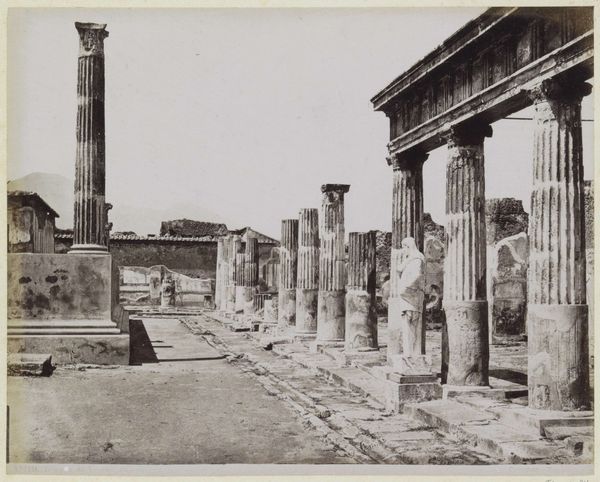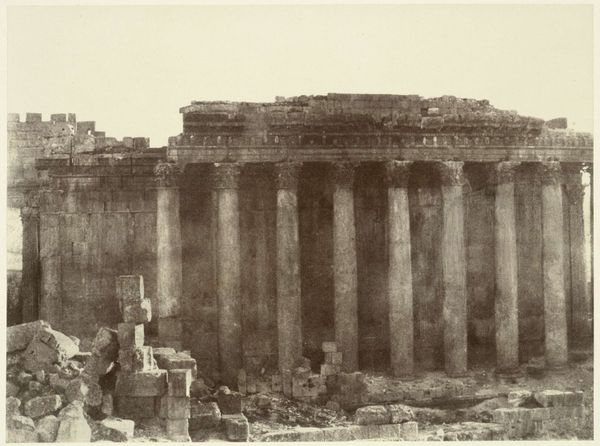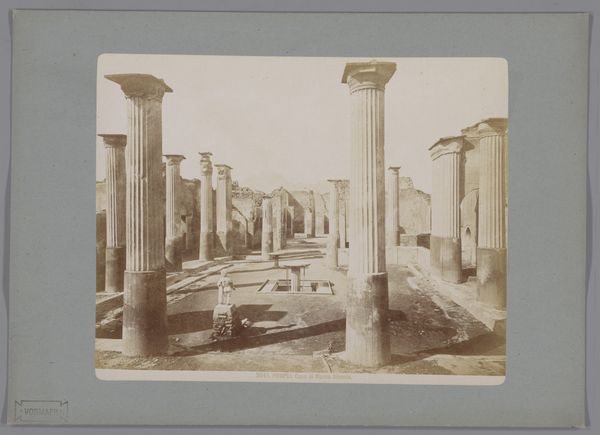
albumen-print, photography, albumen-print
#
albumen-print
#
greek-and-roman-art
#
landscape
#
photography
#
ancient-mediterranean
#
cityscape
#
albumen-print
Dimensions: 24 x 51 3/8 in. (60.96 x 130.49 cm) (image)24 x 51 3/8 in. (60.96 x 130.49 cm) (mount)
Copyright: Public Domain
Curator: This albumen print from the 1870s captures the Roman Forum in a moment of historical transformation. It's simply titled "The Roman Forum." Editor: The photograph possesses such a melancholic grandeur. You see the light capturing the texture of these ruins...there’s a palpable sense of time and erosion. Curator: Yes, albumen prints were significant in the way they shaped perceptions of classical antiquity. Consider the labor involved. This would require skilled photographers using portable darkrooms and glass plate negatives. The printing process itself, coating paper with albumen and silver salts, demonstrates a real investment in presenting a specific image of Rome to a wider audience. Editor: That investment speaks to the institutional frameworks through which we understand art and history. The photograph’s distribution via tourist markets, for example, solidified the Forum as an emblem of a bygone empire. The Roman Forum, now presented for popular consumption and remembrance. It serves to legitimize modern political structures by association with this grand classical past. Curator: The photograph flattens the textures in interesting ways, especially considering the rich materiality of the actual stones and structures. The layers of dust, the way the light settles on each fragmented piece. Editor: It's as much about creating a shared experience. People view photographs as proof. Therefore this visual depiction of an idealized ruin starts shaping perceptions, especially around restoration. Curator: Looking closely at the light and shadows brings focus to the labour involved in extracting the albumen for this photographic process. Each detail adds up to a commentary on cultural exchange and material culture. Editor: True. Beyond the ruins themselves, the choices in framing and dissemination contribute to a narrative about how cultures understand their own histories through visual representation. Curator: Reflecting on its composition alongside the craftsmanship...it offers an interesting perspective on value creation and commodity in the late 19th century art market. Editor: Agreed, seeing the way photography made possible this intersection between historical documentation and political project makes it still relevant.
Comments
No comments
Be the first to comment and join the conversation on the ultimate creative platform.
